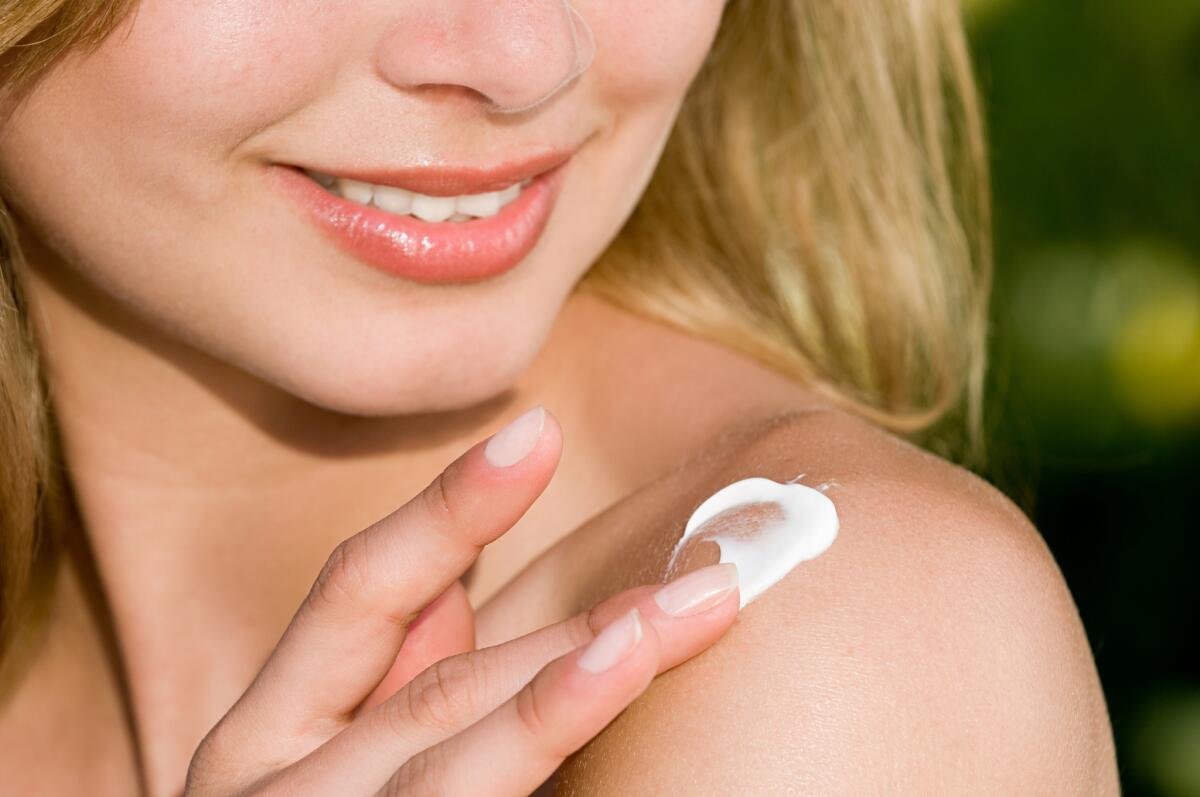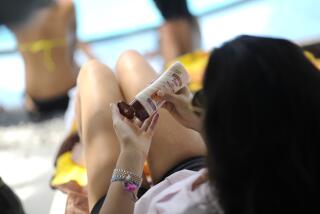New sunscreen labels designed to shed light on products

So, there you are in the sunscreen aisle, where the number of products on the shelves is approximately equal to the number of grains of sand on a beach. How to choose? Read the labels. Your decision may still not be easy, but new labeling regulations should help.
“The new regulations will make a significant difference,” says Latanya Benjamin, a dermatologist at Lucile Packard Children’s Hospital at Stanford University. “They standardize the basics of what to look for in a sunscreen.”
The regulations were issued by the Food and Drug Administration in December to give manufacturers time to make changes for this summer season. (It’s possible some products with the old regulations are still on store shelves.) The new labels divide sunscreens into two kinds: those that can help prevent skin cancer and early skin aging as well as sunburn, and those that only help prevent sunburn. Labels on the first kind will say the products are “broad spectrum” and have SPF values of 15 or higher, and they will state clearly that the products offer both types of protection. Labels on the second kind will carry “skin cancer/skin aging alerts” and warn that the products have been shown to protect only against sunburn.
Until now, a product’s SPF (sun protection factor) was the only objective indicator of its effectiveness. But here’s the rub. While the SPF is a reliable measure of protection against turning into a beet, it’s less reliable as a measure of protection against turning into a prune too soon or getting skin cancer.
Why the difference? Sun damage is caused by two types of radiation: ultraviolet A (UVA) and ultraviolet B (UVB). For sunburn, UVB is the main culprit. So in measuring a product’s protection against sunburn, the SPF is mostly measuring how well it wards off UVB.
But UVA is not just an innocent bystander. It’s seriously implicated, along with UVB, in cancer and premature aging.
Products have boasted of so-called broad spectrum protection before now, but there was no standard definition of what that meant, says Sarah Gee, a clinical instructor in the division of dermatology at UCLA. The FDA had not found any such test to be sufficiently accurate and reliable. Now one has passed muster. And from now on, products can only be labeled “broad spectrum” if they pass this test.
But even that is not enough. A product can only claim it protects against skin cancer and early skin aging if also has an SPF value of 15 or higher.
The regulations ban impossible-to-live-up-to claims (which have nevertheless been made in the past) that a product is “waterproof” or “sweatproof” or serves as a “sunblock.” It’s still OK to claim that a product is water resistant, but only for a specified time: 40 minutes or 80 minutes.
Also largely forbidden are claims that sunscreens start working the minute you apply them (as in “instant protection”) — they should generally be applied 15 minutes before you need them, Gee says — as well as claims that they keep working more than two hours after you apply them.
The FDA has also proposed, but not yet instituted, a regulation requiring SPF values to max out at 50. Any sunscreens soaring to greater SPF heights would be labeled only as “SPF 50+.”
While, in theory, an SPF 100 sunscreen can delay burning twice as long as an SPF 50 sunscreen, in terms of how much UVB the two block, the difference between them is minimal: 99% for the SPF 100 versus 98% for the SPF 50. Even SPF 30 isn’t half bad. It blocks 96.7%.
Super-high SPF values, as well as terms like “waterproof” and “sunblock,” can give you a false sense of security, a sense that you can stay in the sun longer than you really should, Benjamin says, “and that can lead to an increased risk of skin cancer later in life.”
Overall, most dermatologists think the new sunscreen regulations should help consumers choose wisely, although many, including the American Academy of Dermatology, consider the SPF 15 minimum too low and would prefer SPF 30. But, like the FDA, dermatologists emphasize that even the best sunscreen can’t protect you unless you use it correctly. That means plenty of it plenty often.
As a rule of thumb, “plenty” means a blob the size of a golf ball or enough to fill a shot glass, Benjamin says. (Obviously, these amounts don’t apply to sunscreen sticks and sprays, etc. The FDA is working on that.) “Plenty often” means every two hours at least, Benjamin adds, “and more often if you sweat a lot.”
ALSO:
Welcome to Camp Wannabe a Kidagin
Food as medicine? What to make of the claims
Yoga has more to offer than traditional classes






